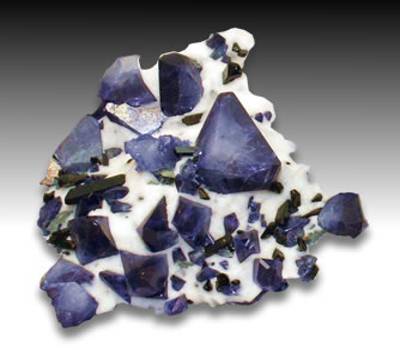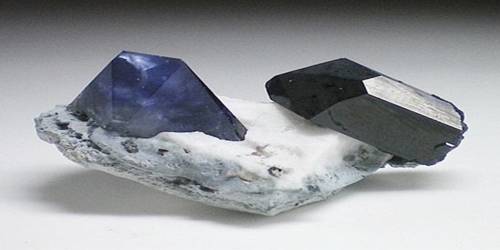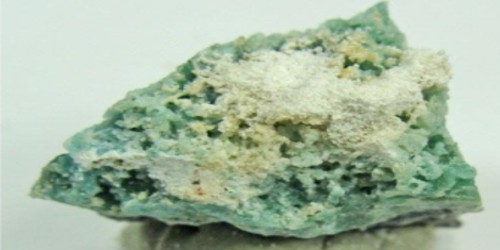Benitoite is a rare blue barium titanium silicate mineral, found in hydrothermally altered serpentinite. It is a rare gemstone, and for all practical purposes only comes from a single limited deposit in California. It is a relatively new gemstone and was first discovered in 1907. Its gemstones have a sapphire-blue color and can have very good transparency and luster. Due to its rarity and lack of availability, Benitoite can be extremely expensive per carat.
Benitoite fluoresces under the short-wave ultraviolet light, appearing bright blue to bluish white in color. The more rarely seen clear to white benitoite crystals fluoresce red under long-wave UV light. It has a rare 5 pointed crystal form, and an even rarer 6 pointed form, “star of David”, with about 24 samples known.
General Information
- Category: Cyclosilicate
- Formula: BaTiSi3O9
- Crystal system: Hexagonal
- Crystal class: Ditrigonal dipyramidal (6m2)
Benitoite is not a typical gemstone and is mostly reserved for collectors and connoisseurs of an exquisite gemstone. It is most often cut in round or oval cuts, though it is not usually seen in jewelry items.

Properties
Benitoite is insoluble in ordinary acids but is attacked by hydrofluoric acid and dissolves in fused sodium carbonate. The color is not affected by heating the stone to redness and allowing to cool. The hardness is greater than orthoclase and less than peridot, or about 6 to 6 1/2, and the specific gravity is 3.64 to 3.67.
- Color: Blue, colorless
- Crystal habit: Tabular dipyramidal crystals, granular
- Twinning: On {0001} by rotation
- Cleavage: [1011] poor
- Fracture: Conchoidal
- Mohs scale hardness: 6 – 6.5
- Luster: Vitreous
- Streak: White
- Diaphaneity: Transparent to translucent
- Specific gravity: 3.6
Occurrence
Benitoite occurs in a number of sites, but gemstone quality material has only been found in California. It typically occurs with an unusual set of minerals, along with minerals that make up its host rock. Frequently associated minerals include natrolite, neptunite, joaquinite, serpentine and albite.
In 1985 benitoite was named as the official state gem of California. The deposit occurs in a large area of serpentine which extends for many miles. The serpentine presents different phases from hard dark-green and greenish-black material to softer lighter-colored rock.
Benitoite is named after its locality in San Benito Co. in California, where this mineral was first found in a remote area far from civilization. It was first described in 1907 by George D. Louderback, who named it benitoite for its occurrence near the headwaters of the San Benito River in San Benito County, California.
Information Source:
















